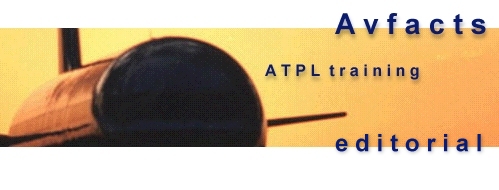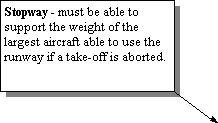|
Once the greater distance to STOP or GO is found, it is
reduced by an amount required to turn the aircraft around 180 degrees after backtracking
for takeoff. This distance is called the Line Up Allowance (LUA), and it varies according
to aircraft model. A B727 for instance has a LUA of 45 metres, whereas a B747 may be more,
and a Fokker 50 something less. The LUA is found in the aircraft manual. Basically,
the only runway distance of use to you is that in front of you once you are lined up,
ready for takeoff.
What we have then is a worst possible case situation that we assess the maximum allowable
takeoff weight on. The V speeds such as V1, Vr, and V2 are then found using this maximum
takeoff weight , unless a takeoff is made a a weight less than the maximum for this
runway. |
|





















